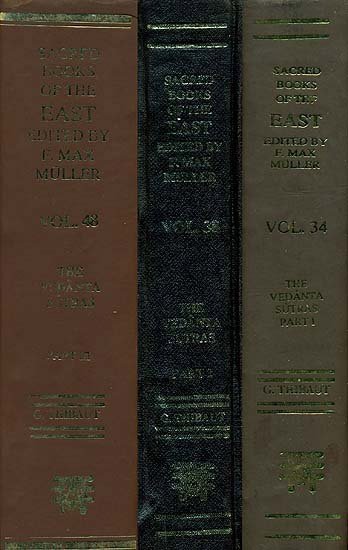Brahma Sutras (Ramanuja)
by George Thibaut | 1904 | 275,953 words | ISBN-10: 8120801350 | ISBN-13: 9788120801356
The English translation of the Brahma Sutras (also, Vedanta Sutras) with commentary by Ramanuja (known as the Sri Bhasya). The Brahmasutra expounds the essential philosophy of the Upanishads which, primarily revolving around the knowledge of Brahman and Atman, represents the foundation of Vedanta. Ramanjua’s interpretation of these sutras from a V...
Sutra 2.3.52
52. Should it be said (that that is possible) owing to the difference of place; we deny this, on account of (all upādhis) being within (all places).
Although Brahman is one only and not to be split by the several limiting adjuncts with which it is connected, yet the separation of the spheres of enjoyment is not impossible since the places of Brahman which are connected with the upādhis are distinct.—This the Sūtra negatives on the ground that, as the upādhis move here and there and hence all places enter into connexion with all upādhis, the mixing up of spheres of enjoyment cannot be avoided. And even if the upādhis were connected with different places, the pain connected with some particular place would affect the whole of Brahman which is one only.—The two Sūtras II, 3, 32 and 37 have stated an objection against those who, without taking their stand on the Veda, held the view of an all-pervading soul. The Sūtras II, 3, 50 and ff., on the other hand, combat the view of those who, while basing their doctrine on the Veda, teach the absolute unity of the Self.—Here terminates the adhikaraṇa of 'the part.'
